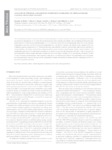Por favor, use este identificador para citar o enlazar este ítem:
http://www.alice.cnptia.embrapa.br/alice/handle/doc/1061859Registro completo de metadatos
| Campo DC | Valor | Lengua/Idioma |
|---|---|---|
| dc.contributor.author | BRITTO, D. de | pt_BR |
| dc.contributor.author | PINOLA, F. G. | pt_BR |
| dc.contributor.author | MATTOSO, L. H. C. | pt_BR |
| dc.contributor.author | ASSIS, O. B. G. de | pt_BR |
| dc.date.accessioned | 2017-01-26T11:11:11Z | pt_BR |
| dc.date.available | 2017-01-26T11:11:11Z | pt_BR |
| dc.date.created | 2017-01-26 | pt_BR |
| dc.date.issued | 2016 | pt_BR |
| dc.identifier.citation | Química Nova, v. 39, n. 9, p. 1126-1130, 2016. | pt_BR |
| dc.identifier.uri | http://www.alice.cnptia.embrapa.br/alice/handle/doc/1061859 | pt_BR |
| dc.description | The food nutritional content is reduced as result of vitamins degradation. In order to minimize such losses, the encapsulation technique into polymeric nanoparticles (NPs) could offer an additional protection, extending the stability. The crosslinking formed by the ionic gelation process of chitosan and tripolyphosphate (Chi-TPP) has been widely used as an encapsulating matrix for several chemical compounds. In this way, Chi-TPP was used for encapsulation of C, B9 and B12 vitamins. The stability of the vitamins in NPs was evaluated in aqueous suspension by UV-Visible spectroscopy under different conditions: stored in dark, light exposure and effect of oxygen bubbling. The results indicated that encapsulation had a positive effect in preserving the vitamins, mainly vitamin C. The encapsulation preserved 47% of the initial concentration of vitamin C by the tenth day and around 28% after 17 days. Conversely, in non-encapsulated controls (neutral and acidic medium) the losses were higher, reaching 13% by the tenth day and almost 3% after 17 days of storage in both medium. When exposed to light and O2 the protection provided by the encapsulation was even greater. By thermogravimetric analysis, the pure and the encapsulated vitamins showed distinct thermal behavior confirming Chi-TPP as a potential encapsulation material. | pt_BR |
| dc.language.iso | eng | eng |
| dc.rights | openAccess | eng |
| dc.subject | Encapsulação | pt_BR |
| dc.subject | Libertação controlada | pt_BR |
| dc.subject | Degradação de vitaminas | pt_BR |
| dc.subject | Alimentos ativos | pt_BR |
| dc.subject | Termogravimétrico | pt_BR |
| dc.subject | Controlled release | pt_BR |
| dc.subject | Tthermogravimetric | pt_BR |
| dc.subject | Vitamin degradation | pt_BR |
| dc.subject | Active food | pt_BR |
| dc.title | Analysis of thermal and aqueous suspension stabilities of chitosan based nanoencapsulated vitamins. | pt_BR |
| dc.type | Artigo de periódico | pt_BR |
| dc.date.updated | 2018-02-07T11:11:11Z | pt_BR |
| dc.subject.thesagro | Nutrição | pt_BR |
| dc.subject.thesagro | Vitamina | pt_BR |
| dc.subject.nalthesaurus | Nutrition | pt_BR |
| riaa.ainfo.id | 1061859 | pt_BR |
| riaa.ainfo.lastupdate | 2018-02-07 -02:00:00 | pt_BR |
| dc.identifier.doi | 10.21577/0100-4042.20160127 | pt_BR |
| dc.contributor.institution | DOUGLAS DE BRITTO, CPATSA; FLÁVIA G. PINOLA; LUIZ HENRIQUE CAPPARELLI MATTOSO, CNPDIA; ODILIO BENEDITO GARRIDO DE ASSIS, CNPDIA. | pt_BR |
| Aparece en las colecciones: | Artigo em periódico indexado (CPATSA)  | |
Ficheros en este ítem:
| Fichero | Descripción | Tamaño | Formato | |
|---|---|---|---|---|
| Douglas1.pdf | 1,28 MB | Adobe PDF |  Visualizar/Abrir |









